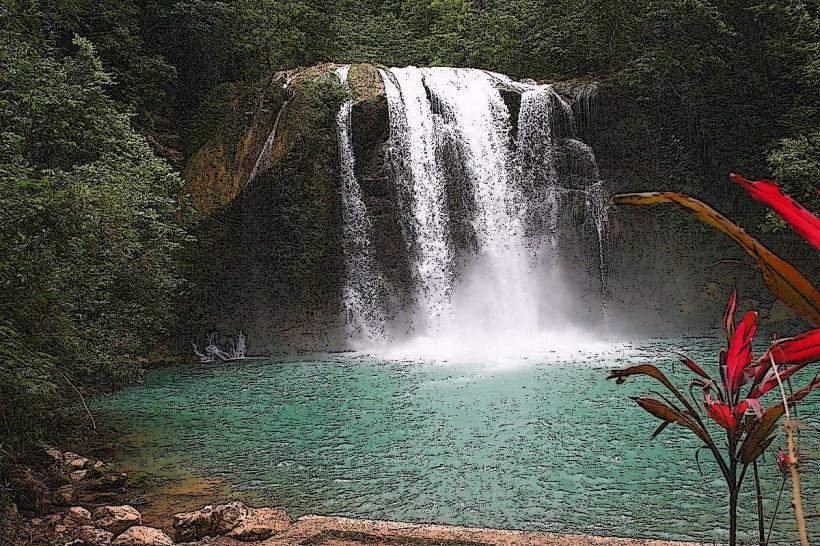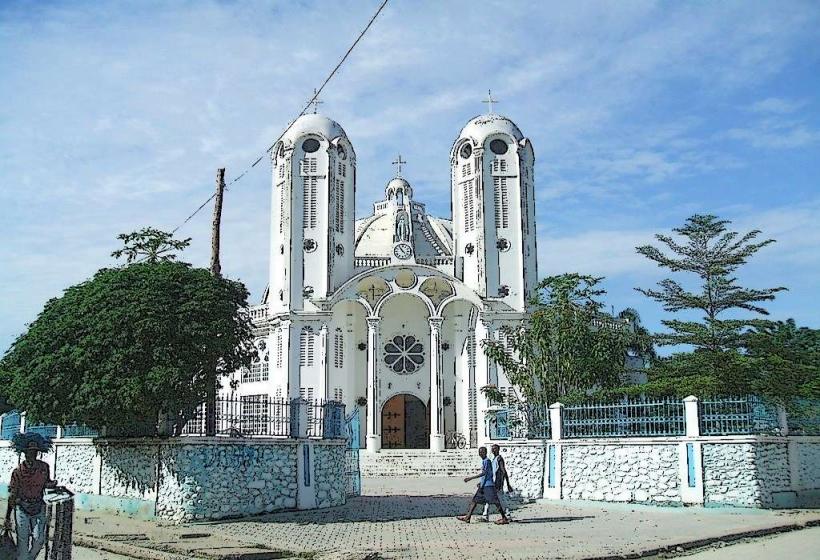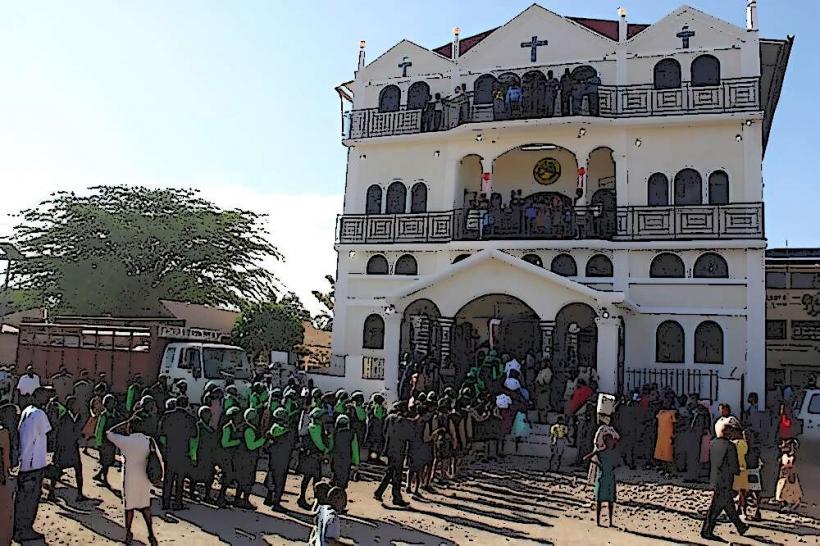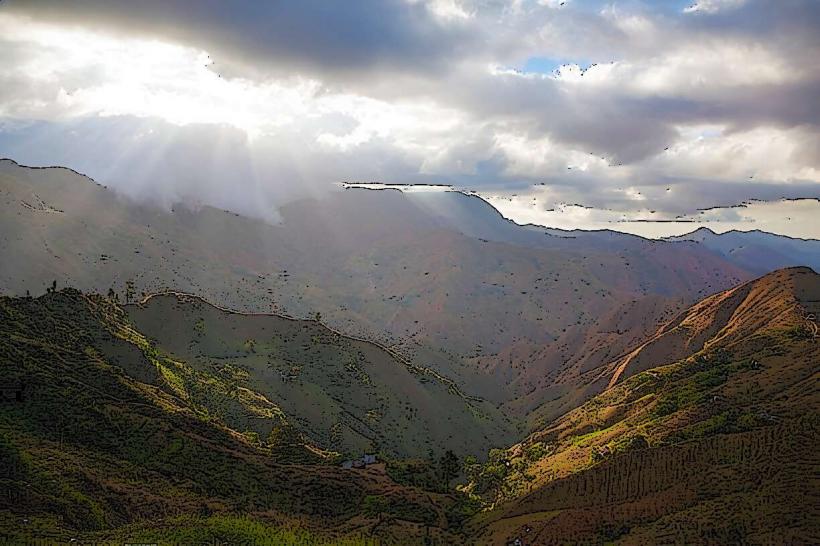Information
Landmark: Peligre ReservoirCity: Hinche
Country: Haiti
Continent: North America
Péligre Reservoir (also known as Lac de Péligre) is a large man-made lake located in central Haiti, created by the Péligre Dam on the Artibonite River. It is one of the most significant bodies of water in Haiti and plays a crucial role in the country’s hydrology, energy production, and economy.
Geographic Location
Location: The Péligre Reservoir is situated in the Artibonite Department, which is in the central region of Haiti. The reservoir is located near the town of Hinche and is surrounded by the mountains of the central plateau. It is positioned approximately 50 kilometers (31 miles) from the coastal town of Saint-Marc.
Size and Capacity: The Péligre Reservoir spans an area of about 25 square kilometers (9.6 square miles) and has a total storage capacity of around 150 million cubic meters of water. This makes it one of Haiti’s largest reservoirs, contributing significantly to the country’s water supply and energy production.
Creation and Purpose
Construction of the Reservoir: The reservoir was created in the 1950s, with the construction of the Péligre Dam, which was part of an effort to improve Haiti’s infrastructure and energy production. The dam was built with assistance from international partners, including the United States. The dam was completed in 1956, and the reservoir was developed to serve multiple purposes, including hydroelectric power generation, flood control, and water storage.
Hydroelectric Power Generation: The primary purpose of the Péligre Reservoir is to generate hydroelectric power through the Péligre Dam. The Péligre Hydroelectric Plant uses the water stored in the reservoir to produce electricity for Haiti, contributing significantly to the national grid. The power generated is crucial for supporting local industries, households, and other sectors of the economy.
Flood Control: The reservoir also plays a role in managing water flow from the Artibonite River. During the rainy season, the reservoir acts as a buffer, helping to prevent floods downstream. This is particularly important in protecting areas such as Gonaïves and Saint-Marc, which are prone to flooding due to heavy rains and river overflow.
Ecological and Environmental Impact
Biodiversity: The reservoir and its surrounding areas support a variety of aquatic and terrestrial wildlife. The waters of the Péligre Reservoir are home to fish species, and the surrounding forests provide habitats for birds and other animals. However, the reservoir’s creation did have some environmental consequences, including the displacement of communities and changes to local ecosystems.
Water Quality: The reservoir plays a key role in the water supply for nearby towns and rural communities. However, water quality can be impacted by various factors, including sedimentation, agricultural runoff, and deforestation in the watershed area. Efforts to improve water management and reduce pollution are important for maintaining the health of the reservoir and the surrounding environment.
Deforestation: The region around the Péligre Reservoir has experienced significant deforestation, leading to soil erosion and decreased water quality. The loss of trees and vegetation increases the amount of sediment that is carried into the reservoir, which can affect water clarity and the dam’s ability to operate effectively. Reforestation and conservation programs are essential to address these issues.
Economic Importance
Energy Production: The Péligre Hydroelectric Plant, which relies on the water stored in the Péligre Reservoir, is a critical source of electricity for Haiti. It is one of the country’s largest and oldest hydroelectric plants, contributing a significant portion of Haiti's electrical supply. The power generated supports urban areas and industries, though the country still faces challenges related to energy access and infrastructure.
Agriculture: The reservoir has indirect economic importance for the agricultural sector. The Artibonite Valley, located downstream of the reservoir, is one of Haiti’s most fertile agricultural regions. The water from the reservoir helps to irrigate fields, supporting the cultivation of rice, corn, beans, and other crops. The availability of water for irrigation is especially important during the dry season when rainfall is scarce.
Fishing and Local Livelihoods: The reservoir also provides livelihoods for local communities, particularly those involved in fishing. The waters are home to various fish species, and fishing is an important activity for those living near the reservoir. However, overfishing and environmental degradation pose challenges to the sustainability of local fisheries.
Challenges and Controversies
Displacement of Communities: The creation of the Péligre Reservoir and the construction of the dam led to the displacement of local communities. Many families who lived along the Artibonite River were forced to relocate as the reservoir flooded their lands. This displacement caused social and economic hardship for those affected and remains a point of contention in the region.
Maintenance and Aging Infrastructure: The Péligre Dam and the hydroelectric plant have faced challenges related to aging infrastructure and a lack of maintenance. These issues have sometimes led to reduced electricity production and concerns about the safety and long-term viability of the dam. Ensuring the proper maintenance and modernization of the dam is critical to sustaining its role in Haiti's energy production.
Environmental Degradation: Deforestation, soil erosion, and agricultural runoff are ongoing challenges for the Péligre Reservoir. These environmental issues not only impact water quality but also exacerbate flooding risks, reduce biodiversity, and threaten the sustainability of local livelihoods.
Tourism Potential
Scenic Views and Eco-Tourism: The Péligre Reservoir and the surrounding mountainous landscapes offer potential for eco-tourism. Visitors can enjoy scenic views of the lake and surrounding hills, participate in activities such as boating or birdwatching, and explore the natural beauty of the area. Sustainable tourism efforts could help support the local economy while preserving the environment.
Péligre Dam and Hydro-Electricity Tour: The dam itself is an impressive feat of engineering and can be a point of interest for visitors interested in infrastructure, energy, and environmental conservation. Educational tours of the Péligre Dam and its hydroelectric plant could provide valuable insights into Haiti’s energy sector and the history of the project.
Conclusion
The Péligre Reservoir is a vital part of Haiti’s infrastructure, providing hydroelectric power, flood control, and water storage for the country. While it plays an essential role in the economy, particularly in the energy and agricultural sectors, the reservoir also faces environmental and social challenges, including deforestation, displacement of communities, and the aging infrastructure of the Péligre Dam. Efforts to address these challenges, along with promoting sustainable practices, will be crucial in ensuring that the Péligre Reservoir continues to benefit Haiti for generations to come.





